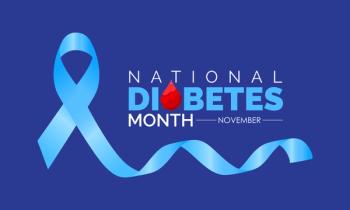
Antiretroviral Therapy, Anticoagulants in HIV-infected Patients for Stroke Prevention in Atrial Fibrillation
Significant morbidity and mortality are associated with an aging population due to cardiovascular disease, which is very common in HIV-infected persons.
HIV and Atrial Fibrillation Prevalence
The number of HIV-infected persons aged ≥13 living in the United States was estimated to be more than 1.1 million at the end of 2015.1 Of that number, 162,500 (15%) had not been diagnosed.1
The incidence of HIV has remained stable with 50,000 new HIV-infected persons per year, which thereby led to decreased mortality. This attributed for 3 deaths per 100,000 persons in 2013 compared with 17 deaths per 100,000 in 1994-1995.2
Significant morbidity and mortality are associated with an aging population due to cardiovascular disease, which is very common in HIV-infected persons. Atrial fibrillation, the most common type of cardiac arrhythmia, increases by the severity of HIV disease, with a 40% increase with CD4 cells count < 200 cells/mm3 and 70% increase with HIV viral load > 100,000 copies/ml.3 Overall, the rate of atrial fibrillation in patients with HIV per year is approximately 3.6 events/1000 persons.4
It was estimated that in 2010, 2.7 to 6.1 million people in the United States have atrial fibrillation and that number is expected to rise between 5.6 and 12 million by 2050.5 More than 750,000 hospitalizations occur each year, causing an annual increase of approximately $6 billion to medical cost in the United Sates. Medical cost for people who have atrial fibrillation was $8705 higher than for those who do not.5
There are numerous risk factors associated with atrial fibrillation. These include advanced age, hypertension, obesity, European ancestry, and comorbidities such as diabetes, heart failure, ischemic heart disease, hyperthyroidism, and chronic kidney disease.6 Moreover, the increased risk of stroke associated with atrial fibrillation goes up to 5 times in severity and causes 15%-20% of all ischemic strokes.6
Atrial Fibrillation Trials and Efficacy Endpoints
Randomized trials have tested long-term use of antithrombotic agents in non-valvular atrial fibrillation patients from 1966 to 2007.7 Compared with placebo, adjusted-dose warfarin reduced the risk of stroke by 64%.7
With a long track record, rapid turnaround genetic testing, and a low drug cost, warfarin has shown significant efficacy. Nonetheless, challenges such as narrow therapeutic index, ongoing laboratory testing and dose adjustment, unpredictable pharmacology, multiple drug-drug and drug-food interactions, and increased risk of major and minor bleeds, have made warfarin unfavorable.
Over the years, the era of direct oral anticoagulants (DOACs), such as dabigatran (Pradaxa), rivaroxaban (Xarelto), apixaban (Eliquis), and edoxaban (Savaysa) have taken the market by storm. DOACs are becoming more and more favorable to physicians and patients.
Countless atrial fibrillation studies have been conducted to assess the safety and efficacy of DOACs in patients with non-valvular atrial fibrillation. The randomized open label RE-LY trial comparing warfarin and dabigatran has shown an annual rate of stroke and systemic embolism of 1.7% with warfarin and 1.1% with dabigatran.6
The annual rate of stroke and systemic embolism was 2.4% with warfarin and 2.1% with rivaroxaban in the ROCKET-AF trial.6 The ARISTOTLE trial comparing warfarin and apixaban has shown an annual rate of stroke and systemic embolism of 1.6% with warfarin and 1.3% with apixaban.6
The annual rate of stroke and systemic embolism was 1.8% with warfarin and 1.6% with edoxaban in the ENGAGE-AF trial.6 There is major concern with the lack of ability to monitor the level of anticoagulation with the newer agents.
Physicians and patients tend to overestimate the risk of bleeding, and thus, anticoagulation in eligible patients is often withheld. Analysis of stroke prevention studies report ~25%-30% of patients with CHADS2-VASC ≥2 are not on anticoagulants.8,10 Stroke prevention is vital in HIV patients.
Pharmacokinetics
There are potential drug-drug interactions between anticoagulants and antiretrovirals (ARVs). Certain ARVs, such as protease inhibitors (PIs), non-nucleoside reverse transcriptase inhibitors (NNRTIs), and the PK booster cobicistat (COBI), have significant drug interactions with other medications. Interactions may be complex and difficult to predict.
All PIs are CYP3A4 substrates; they are either inducers or inhibitors of other CYP isoenzymes or P-glycoprotein (P-gp). NNRTIs are substrates of CYP3A4, and can act as inducers, mixed inducers or inhibitors.
Warfarin is metabolized in the liver by the CYP 450 enzymes with the S enantiomer being metabolized by CYP2C9, and the R enantiomer by CYP3A4, CYP1A2, and CYP2C19.9 PIs such as ritonavir, saquinavir, tipranavir-combined with ritonavir, atazanavir, and darunavir have been shown to inhibit CYP 2C9 or 3A4. Hence, a 20% reduction in warfarin dose may be required.9
Other PIs such as nelfinavir, lopinavir/ritonavir, and ritonavir can induce CYP 2C9 or 3A4 and therefore, a 50% increase in warfarin dose may be required.9 NNRTIs such as efavirenz (2C9), delavirdine, and etravirine (2C9) can inhibit CYP 2C9 or 3A4; thus, patients on those NNRTIs will need a 50% reduction in warfarin dose.
Other NNRTIs such as efavirenz (3a4), nevirapine, etravirine (3a4), and rilpivirine can induce 2C9 or 3A4 causing an increase in the warfarin dose required to maintain therapeutic INR range from 100% to 140%.9 Hence, the challenge to manage patients with HIV who are anticoagulated with warfarin for stroke prevention is convoluted.
Can DOACs be the ultimate favorable anticoagulants for HIV patients with atrial fibrillation?
There are interaction possibilities at the level of absorption or first transformation, and at the level of metabolism and excretion. The PI, ritonavir, which is a strong 3A4 inhibitor is more likely to precipitate a clinical effect when used with certain DOACs (Xarelto and Eliquis) concomitantly.11
The AUC of dabigatran may rise as a result of administration of P-glycoprotein; however, it may be clinically irrelevant if administration is separated by 2 hours.11 There are no expected clinical drug interactions between the NNRTIs/integrase inhibitors and dabigatran.11
Dabigatran appears to be favorable for HIV-infected patients with atrial fibrillation. The guidelines for the Use of Antiretroviral Agents in Adults and Adolescents Living with HIV recommend specific adjustment if administration of DOAC and antiretroviral is necessary.
A 50% Eliquis dose reduction and toxicity monitoring are required when combined with Elvitegravir/Cobicistat (EVG/c).12 The co-administration of betrixaban, dabigatran, edoxaban, and rivaroxaban and EVG/c is not recommended.12
Selecting the ARV and DOAC with lower potential of drug interactions is the key to drug interaction management. In summary, HIV-infected persons have an increased risk of atrial fibrillation and stroke. DOACs provide the promise of safer and more convenient anticoagulation; however, tenacious concerns arise with the lack of antidote for some of these agents.
In addition, peri-procedural management remains questionable and apprehensive. Although, current guidelines recommend DOACs as alternatives to warfarin due to an increase in efficacy and safety, proper review and evaluation of ARV and DOAC pharmacokinetics and metabolism should be conducted prior to recommending treatment in HIV-infected patients for stroke prevention in atrial fibrillation.
References
- Dailey et al. CDC. Vital Signs: Human Immunodeficiency Virus testing and diagnosis delays — United States. MMWR 2017; 66:1-7
- Hall HI, An Q, et al. CDC. Prevalence of Diagnosed and Undiagnosed HIV Infection — United States, 2008—201 MMWR 2015; 64:657-662.
- Hsu JC, Li Y, et al. Atrial Fibrillation and Atrial Flutter in Human Immunodeficiency Virus-Infected Persons Incidence, Risk Factors, and Association With Markers of HIV Disease Severity. Journal of the American College of Cardiology. 2013; 61(22): 2288-2295.
- Chow FC, Regan S, et al. Comparison of Ischemic Stroke Incidence in HIV-Infected and Non—HIV-Infected Patients in a US Health Care System. J Acquir Immune Defic Syndr 2012;60:351–358.
- Mozaffarian D, Benjamin EJ, et al: Heart disease and stroke statistics—2015 update: a report from the American Heart Association. Circulation 2015; 131:e29–e322
- Ruff CT, Ansell JE, et al. North American Thrombosis Forum, AF Action Initiative Consensus Document. The American Journal of Medicine. 2016; 129(5S): S1-S29
- Hart et al. Who Have Nonvalvular Atrial Fibrillation. Ann Intern Med. 2007;146:857-86
- Johansson C, Hägg L, et al. Characterization of patients with atrial fibrillation not treated with oral anticoagulants. Scandinavian Journal of Primary Health Care. 2014; 32(4): 226-231.
- Liedtke MD, Rathbun RC. Warfarin—Antiretroviral Interactions. Ann Pharmacother 2009;43:322-8.
- Ogilvie et al. The American Journal of Medicine. 2010; 123: 638-645A Systematic Review. The American Journal of Medicine. 2010; 123: 638-645
- Egan G, Hughes CA, et al. Drug Interactions Between Antiplatelet or Novel Oral Anticoagulant Medications and Antiretroviral Medications. Annals of Pharmacotherapy 2014; 48(6): 734— 740
- Panel on Antiretroviral Guidelines for Adults and Adolescents. Guidelines for the Use of Antiretroviral Agents in Adults and Adolescents Living with HIV. Department of Health and Human Services. Available at http://www.aidsinfo.nih.gov/ContentFiles/ AdultandAdolescentGL.pdf. Accessed January 29, 2018, page 2 of 17, Table 18a.
Newsletter
Stay informed on drug updates, treatment guidelines, and pharmacy practice trends—subscribe to Pharmacy Times for weekly clinical insights.


















































































































































































































